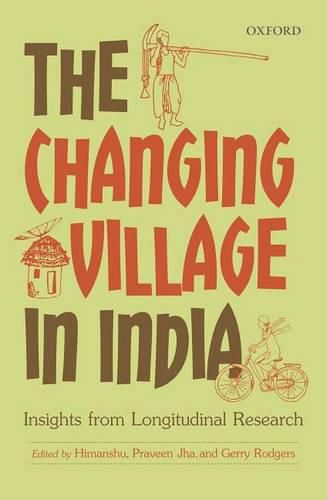Readings Newsletter
Become a Readings Member to make your shopping experience even easier.
Sign in or sign up for free!
You’re not far away from qualifying for FREE standard shipping within Australia
You’ve qualified for FREE standard shipping within Australia
The cart is loading…






While India has had a long history of village studies, longitudinal studies that have followed the same village or set of villages over time have a special place in the literature on transformation of economic production and social structures in rural areas. This book brings together aspects of change in rural India through recent research based on longitudinal village studies. The revival of village studies in recent years is a testimony to their usefulness in providing answers to questions that elude the narrow confines of mainstream theory and large-scale surveys.
The book addresses three broad areas of concern: the first relates to the method and conceptual framework of longitudinal village studies how information is collected and the ways in which it is used and analysed; the second aims at a broad understanding of villages across different dimensions of economy and society, offering wide and integrated accounts of particular villages; and the third explores particular themes in some detail within this broader framework. By bringing together different contributions from the tradition of longitudinal village studies, the book addresses a range of analytical and policy issues, highlights the problems and potentials of the longitudinal method, and encourages more work in this tradition.
$9.00 standard shipping within Australia
FREE standard shipping within Australia for orders over $100.00
Express & International shipping calculated at checkout
While India has had a long history of village studies, longitudinal studies that have followed the same village or set of villages over time have a special place in the literature on transformation of economic production and social structures in rural areas. This book brings together aspects of change in rural India through recent research based on longitudinal village studies. The revival of village studies in recent years is a testimony to their usefulness in providing answers to questions that elude the narrow confines of mainstream theory and large-scale surveys.
The book addresses three broad areas of concern: the first relates to the method and conceptual framework of longitudinal village studies how information is collected and the ways in which it is used and analysed; the second aims at a broad understanding of villages across different dimensions of economy and society, offering wide and integrated accounts of particular villages; and the third explores particular themes in some detail within this broader framework. By bringing together different contributions from the tradition of longitudinal village studies, the book addresses a range of analytical and policy issues, highlights the problems and potentials of the longitudinal method, and encourages more work in this tradition.